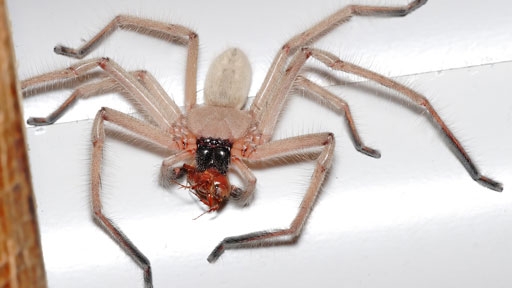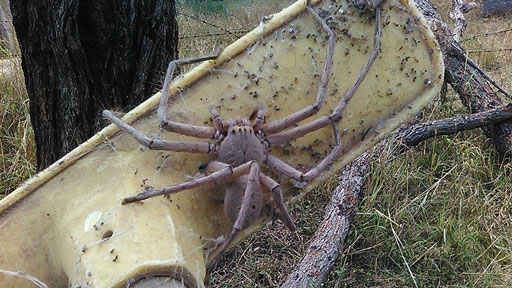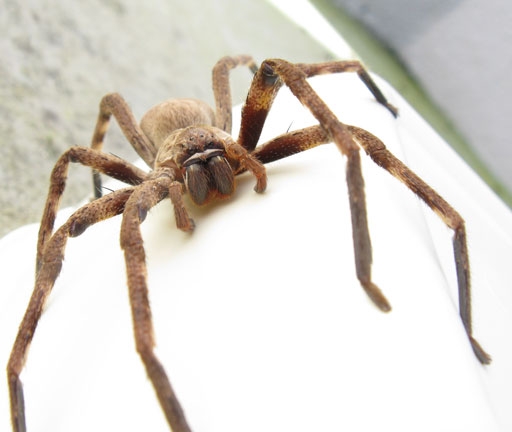
Arachnophobics may want to stop reading here. With their sometimes large size and fierce hunting skills, huntsman spiders would terrify anyone at first glance.
Instead of weaving webs like most spiders, huntsman spiders actively hunt down their prey, which typically include insects and small invertebrates. They can move very quickly — up to 3 feet per second — with some species capable of doing cartwheels and backflips mid-run.
Watch a huntsman catch a cockroach in the video below to get an idea of their speed:
Average huntsman spiders are about an inch long with a leg span (measured diagonally from the tip of one leg to the tip of the opposite leg) of up to 5 inches. But the Giant huntsman spider, or Heteropoda maxima, is the world’s largest spider by diameter. It’s as big as a dinner plate, with a leg span of up to 1 foot!
The first Giant huntsman on record was discovered in 2001 in a cave in Laos, and few people have actually laid eyes on the gargantuan creature.

But that may have changed recently when one Australian animal sanctuary uploaded this photo on Facebook of a seemingly massive huntsman spider. Experts aren’t sure of the exact species – but they think it could be a Giant Green huntsman, which is the largest species found in Australia.
Huntsman spiders are often mistaken for tarantulas because of their size, but unlike tarantulas, their legs extend forward like a crab’s.

They prefer woody places like forests, where they live under loose bark, foliage or rocks. But they are commonly found in wooden shacks and have been known to enter people’s houses and cars, especially in Australia.
Still, they are relatively harmless to humans.
They generally only bite when provoked or in the case of females, when their young are threatened. While the bite may hurt, their venom isn’t considered too dangerous to a healthy person. Mild symptoms include localized swelling, and more rarely, nausea, vomiting, and heart palpitations.
Huntsman spiders might also have a “cling” reflex when picked up, making them hard to shake off and increasing your chances of getting bitten — so you may want to approach with caution.
Watch one of these spiders carrying a dead mouse in the video below (if you dare!):




